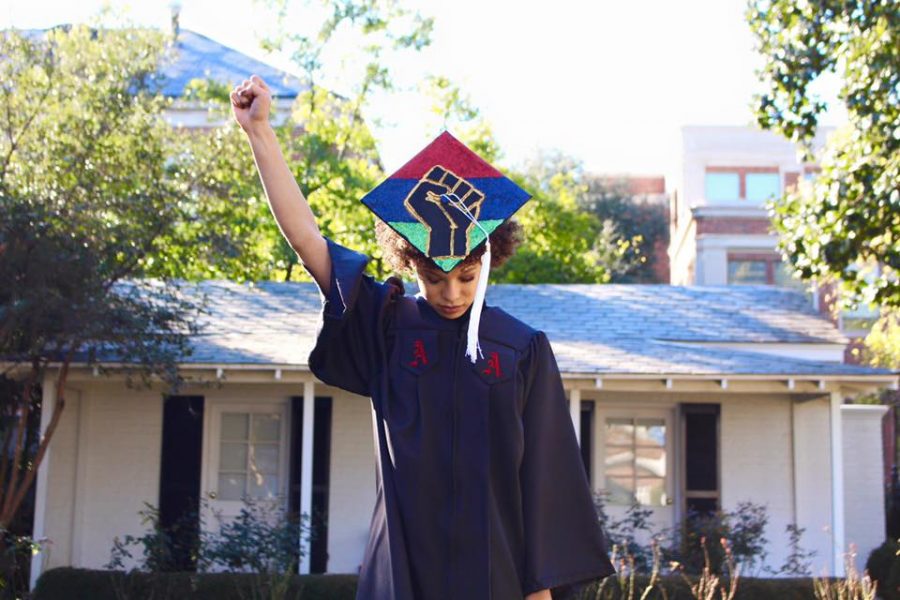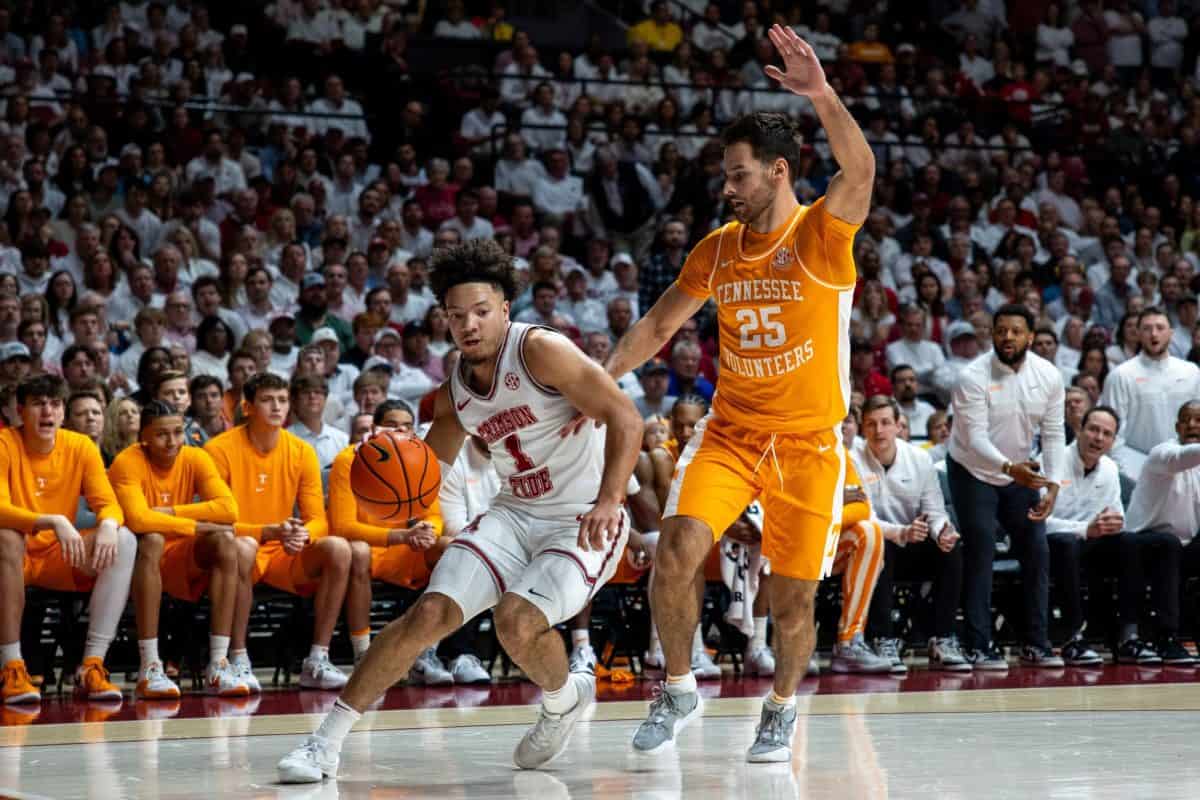She stands behind the President’s Mansion, her dark grey University of Alabama robes draped around her, with her head bowed to the ground, eyes shut, and her right arm raised in a fist pointed toward the sky. From her graduation cap adorned in red, blue and green, a gold and black fist mirrors her gesture.
In the background is a black and white building few students know about. They pass by it everyday on their way to class or football games. This is the quarters where the University housed slaves in the 1800s.
This photo of Alexandrea Summers, a senior majoring in English, has gone viral, receiving 2,559 shares in 24 hours on Facebook, but neither she or the photographer, Terrence Martin, anticipated the popularity of the photo.
The President's Mansion on the campus of the University of Alabama has served as the official residence of university…
Posted by Alexandrea Summers on Saturday, February 20, 2016
“I had a lot of people tell me they didn’t even know [the slave quarters] existed,” Summers said. “Alumni messaged me because they didn’t know. I love that it’s gotten a lot of shares from all races. It’s not just African Americans sharing and commenting. It’s everyone. That made me really happy.”
Summers was like many UA seniors at the University, taking pictures in time for graduation. She had a business card from a previous encounter with Martin, a junior majoring in marketing who also moonlights as a photographer, and planned to take photos in front of the President’s Mansion. It was something of a tradition, but she didn’t know why.
“I was looking up [online] the President’s Mansion,” she said. “It was on the same page, just a couple sentences, there was a slave quarters behind it. It caught my attention, and I started looking into UA slave history. It’s kind of a big deal. I feel it’s important to recognize the past because it celebrates progression.”
Summers wasn’t surprised by the discovery. She already knew about the graves of two slaves near the Biology Building. But, she didn’t understand why it wasn’t talked about or mentioned on the tours of the University’s campus.
Deciding she was going to take her graduation photos there instead, she said she emailed the University several times about getting permission but never received a reply.
“I don’t think we can go back there,” Martin had told her.
“It’s okay. We’ll sneak,” Summers said with a laugh. “That’s kind of how it all got started.”
For her cap, Summers wanted a visual representation of unity, empowerment and progression. When Martin saw the cap, he realized he had the opportunity to encapsulate a story of past, present and future.
“When we went back there, that was the first time I thought let me get visuals of this cap,” Martin said. “All of it was like the positioning, how she put her hands up, and stuff like that and the angle. Along with the cap and location, that’s what made the story of the picture.”
While the cap and the pictures at the slave quarters were preplanned, the gesture occurred to Martin in a moment of inspiration, seeing Summers stand in front of the quarters.
“The fist is very symbolic, especially in black culture—black pride, justice, power,” he said. “I felt it was very fitting for the picture and the hat.”
Summers’s mother told her the picture was going to go viral, but she dismissed the idea. The night after she posted the picture, Summers had to turn off her Facebook notifications to go to sleep because people were sending her messages or sharing her post. So far, Summers said the reception has been extremely positive and has helped educate people.
Summers views the slave quarters with the same conflicted feelings that she views the University buildings with slaveowners’s names.
“In a way, you want to take the name off the building because that’s not who UA represents anymore, but at the same time, it’s nice to have it there to talk about it,” Summers said. “That was kind of where UA was at the time. If we erase it, are we going to erase the dark history? We should be talking about [the past].”
Having a diverse group of friends, Martin said he hasn’t had personal experience with racism problems on campus, but he’s not saying it doesn’t exist. Summers, who worked as a waitress at Applebee’s, said sometimes drunk students would come in and make inappropriate racial slurs.
“It’s there, but it’s kind of undercover,” she said. “It’s hidden in plain sight like the slave quarters.”
Both Martin and Summers hope the photo will promote conversation and discussion. With the way social media is set up, Martin said he’s a chance for the photo to go “super viral” because the issue is a topic of conversation. For Summers, the photo represents both a chance to learn from the past and make progress toward the future.
“I feel like the most important thing is education,” she said. “I don’t feel like there’s a lot of terrible people. I just feel like there’s a lot of people who are ignorant and just don’t know. The more you talk and educate yourself and the people around you, that’s the only way positive change will ever come.”









